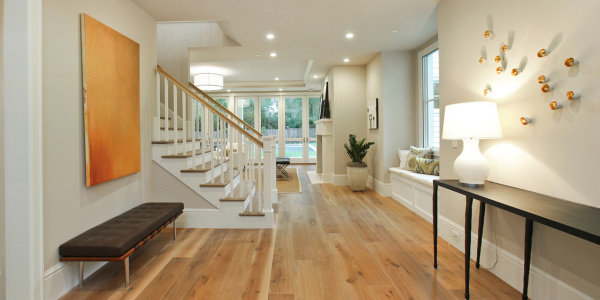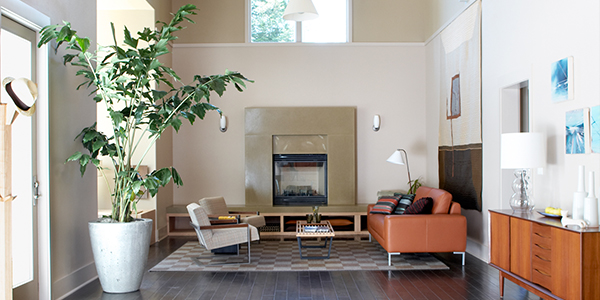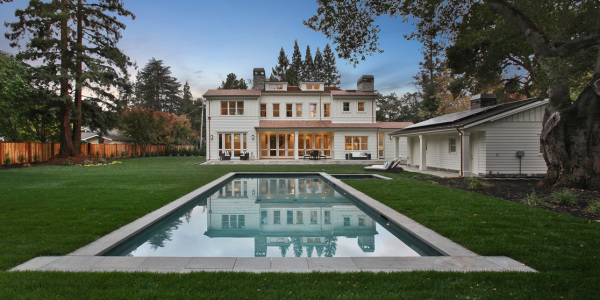These resources are from an archived version of our website. Want to see what we’ve been up to lately? Check out our new website.
LEED Certification: A smart move for modern homeowners (pt.1)

Green homebuilding is on the rise. Since 2005, the green share of new single family residential construction has grown dramatically – increasing more than 20 percent since 2005.
In Silicon Valley and Palo Alto, some residents are taking green homes one step further. Increasingly, this population is striving to make measurable, innovative, and lasting differences through LEED certification – the highest standard of green homebuilding. Read more to learn more about this innovative certification and how LEED standards can help take green homebuilding to the next level.
Setting the highest bar for sustainability
LEED, or Leadership in Energy and Environmental Design, is an internationally-recognized, third-party rating system for green building design. Founded by the U.S. Green Building Council (USGBC) in 2000, LEED serves as a primary vehicle for defining, rating, and certifying sustainable design and construction. To date, almost 1.8 million square feet of buildings have been LEED certified, making it one of the most popular certification programs for sustainable buildings used worldwide.
Focuses of certification
LEED takes a holistic approach to certification, evaluating environmental performance from a whole-building perspective over a building’s life cycle. Construction projects pursuing certification earn points across several areas that address sustainability issues. Based on the number of points achieved, a project then achieves one of four LEED rating levels: Certified, Silver, Gold and Platinum.
The LEED program embodies innovation by striking a balance between known established practices and emerging concepts – it considers the following categories when evaluating homes for certification:
- Materials:Focuses on materials to get a better understanding of what’s in them and the effect those components have on human health and the environment
- Performance-based:Takes a performance-based approach to indoor environmental quality to ensure improved occupant comfort
- Smart grid:Brings the benefits of smart grid thinking to the forefront with a credit that rewards projects for participating in demand response programs
- Water efficiency:Provides a clearer picture of water efficiency by evaluating total building water use
Experience the benefits of LEED certification

When homebuilders strive to meet LEED’s standards, the benefits can be unmeasurable for both clients and the environment. Explore some of the elements that only scratch the surface:
Sustainable building processes
LEED standards ensure that homebuilders use practices that don’t harm the environment. For example, LEED promotes waste management in construction by requiring contractors to track and report diversion rates. As a result, these homes produce less waste in the building cycle and contractors recycle more.
Energy efficiency
Studies show that LEED certified homes use substantially less energy than a comparable home built to International Energy Conservation code. LEED’s program can provide third-party insurance that the home will realize these significant energy savings – and the stats prove it: LEED-certified homes can save 30-60 percent on residential energy bills.
Reduced water use
Because LEED requires water-efficient features, it’s not uncommon for LEED-certified buildings to consume 11 percent less water. Factors contributing to water savings include efficient plumbing and bath fixtures, drought-tolerant landscaping, and water-conserving irrigation systems.
Improved indoor air quality
Air pollution levels inside the average new home in the United States are two to five times worse than the levels outside. At Clarum, we know that the best way to combat this reality is to prioritize air quality during home construction. Fortunately, LEED-certified homes ensure proper flow and ventilation, maximizing fresh air indoors and reducing exposure to toxins and pollutants in the air.
Increased satisfaction perceived value
Along with a 27 percent higher occupant satisfaction, green homes typically have a higher resale value and are on the market for less time than conventional homes. According to a recent study, green-certified new homes sold for 8 percent higher than those that weren’t certified. On top of that, resales of existing green homes sold for an average of 30 percent more than conventional homes.
Putting LEED’s principles into practice

Clarum strives to Live Innovation by partnering with clients and improving construction through the use of better technologies, materials and systems. As part of this goal, Clarum is an official member of the USGBC and builds LEED-certified homes, such as the LEED gold-rated Modern Farmhouse in Atherton, CA.
John Suppes, President and Founder of Clarum, says: “We want the future of home building to incorporate LEED and passive home standards. I’m building the type of house that I want to live in and that I want my kids to live in. It’s healthier for the occupants and better for the earth.”
To learn more about building a LEED custom home with that’s healthy for you and your family, call Clarum at 650.322.7069.








